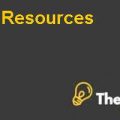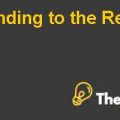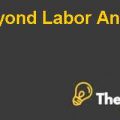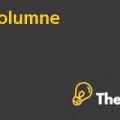
The Five Competitive Forces That Shape Strategy
In 1979, porter developed a framework that is used to check the attractiveness of an industry and is known as porter five forces. Returns will be higher if the magnitude of porter forces is low. Returns will not be higher if the magnitude of porter forces is high. There are five porter forces (See Figure 1 in the appendix) and every force has many factors to be considered related to the industry.
These forces have an impact on company’s profitability; hence, companies can increase their profitability. By using these forces, companies can develop strategies to increase their profitability. Following are the impact of each force that shape competition.
Threat of Entry:
When an industry has high entry barriers, so threat of new entry will be low. If economies of scale can’t be achieved quickly, then threat of new entry will be low. If a company has strong brand loyalty, so threat of new entry will be low. For example, Internet users are addicted to browse eBay for auction. When customer’s switching is high, so threat of new entry will be low. For example, an organization has installed ERP software. It will be costly for that organization to install new software. When large capital is required to set up an organization, so threat of new entry will be low. However, when a company does not have sufficient distribution channel, then it will not be easy for that company to enter into that industry. When there are strict government policies, then threat of new entry will be low.
The Power of Suppliers:
When there is a monopoly of a supplier, then power of suppliers will be high. When suppliers are dealing with too many industries, so power of supplier will be higher. When switching cost for companies is high, then power of supplier will be higher. Power of suppliers will be high, if they provide products with differentiation. Power of supplier will be high when there is no substitute available for that product.
The Power of Buyers:
When suppliers are powerful, then buyers will not be powerful. Power of buyers will be higher if there are few buyers. When buyers can find substitute product, so power of buyers will be higher. When switching cost is low; power of buyers will be higher.
The Threat of Substitute:
When switching cost is low, threat of substitute product will be high. When threat of substitute product is high, then profitability of the industry will suffer.
Rivalry among Existing Competitors:
Rivalry among competing firms will be high when companies are equal in size, there are large numbers of companies operating, it is difficult to exit from the market, companies have same capabilities and when fixed cost is high.
Mistakes That Companies Make
There are some common mistakes that companies make while analyzing industry attractiveness. Sometimes companies only pay attention on industry growth rate. Industry growth rate can’t be the only factor to look to analyze industry attractiveness. It is because grow rate can give assurance of profit. There are some factors that are given extra attention like government and complementary products. It is recommended to strategist to analyze all five forces rather emphasize on any specific factor.
Changes in Industry Structure:
The impact of each factor has been discussed. Now how we can overcome threat of supplier, buyer, new entrant, substitute and rivalry. In order to reduce threat of new entrant, companies should invest in the implementation of new processes like distribution channel. That’s how it will be more difficult for new companies to get economies of scale quickly. To reduce the power of buyers, improve and expand your customer service to make it difficult for customers to switch. To reduce the threat of substitute, companies should use advance technology to produce better products and reduce price. When there is high rivalry, companies make merger and acquisition in order to reduce rivalry.
Implication of the Strategy
Porter five forces help to understand the condition of an industry. By analyzing these conditions we can make strategies. We can use “position the company” strategy, which is used to defend from forces. Another strategy is to find change in the industry. This strategy is called “exploiting industry change”. Third strategy is “shaping industry structure”. In this strategy, company is required to anticipate the structural change and implement that change and create example for others to follow in the industry. Shaping industry structure can be done in two different ways. These ways consist of redividing profitability and expanding the profit pool...........................
This is just a sample partial case solution. Please place the order on the website to order your own originally done case solution.













